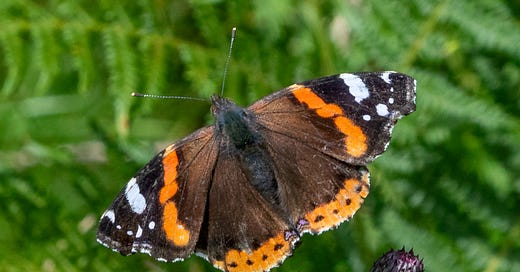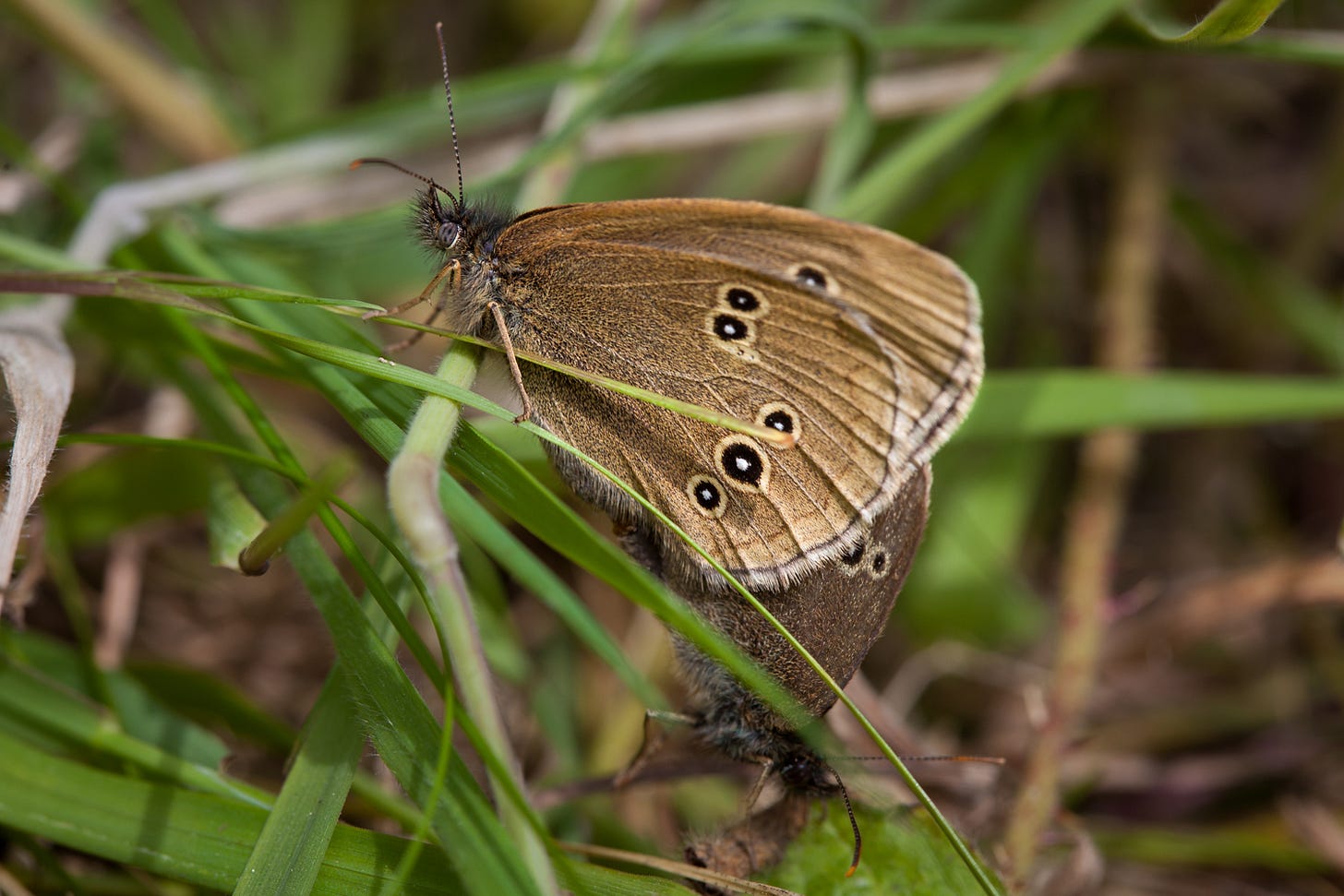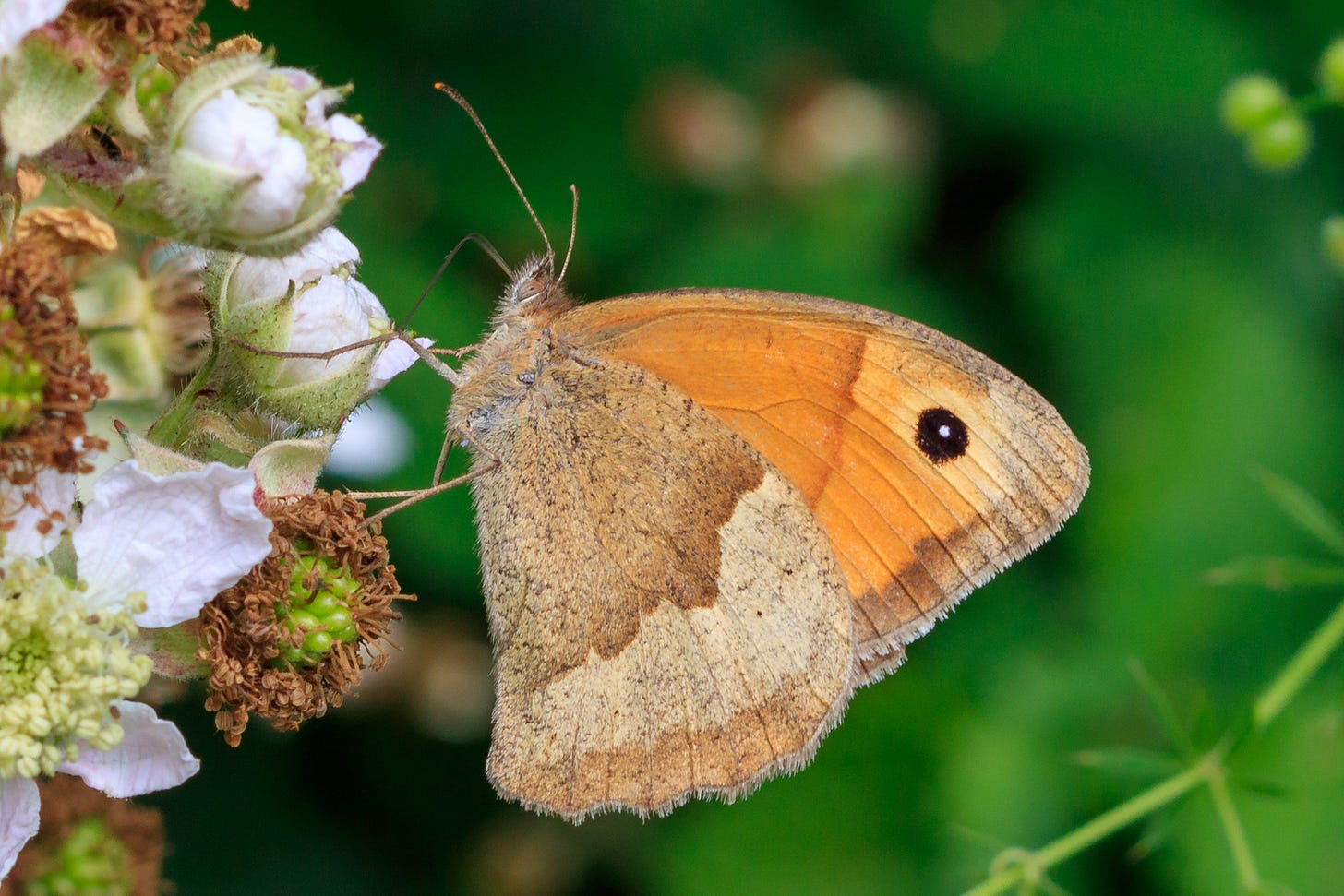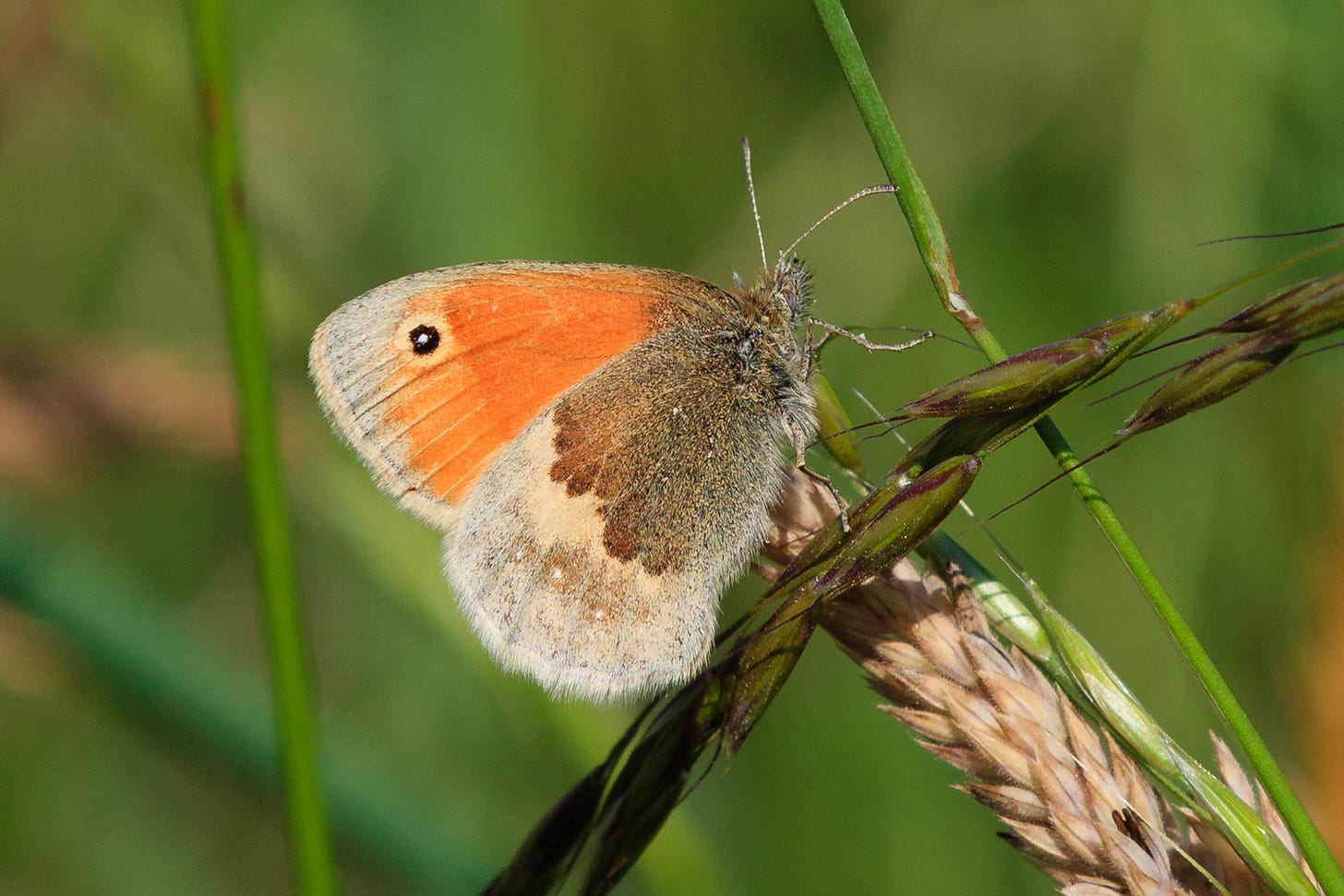Enjoy the fleeting jewels of the summer months
My observations of butterflies Part Two (and the Save Glen Lednock campaign)
As outlined in last week’s post, this is my seventh year of surveying butterflies on the same patch of ground in Highland Perthshire. In that time I have recorded 18 species there and grown to recognise their characteristic behaviour and flight patterns. To me they have become distinctive personalities.
I described nine of them in Part One. Here in Part Two, I take a fond (and somewhat anthropological) look at the other nine that I have encountered while walking my transects.
The area I cover is a steep, south facing hillside in Strathbraan, west of Dunkeld. It rises from 190m (620ft) to 320m (1050ft), so is distinctly upland in landscape and weather. I can walk from sheltered sunspots buzzing with bees to windswept heath in twenty minutes (although I take longer and go slower when monitoring my surrounds for butterflies or – in high summer – counting a cloud of them rising from my feet or decorating a patch of thistles).
The ground is clothed in regenerating native woodland and rough grassland, trending to heather moorland in its upper reaches. The underlying metaphorphic rock is impermeable and moulded by heat and pressure into wavy patterns. Much of it is exposed, in the form of boulders, outcrops and crags. In due course I will write more about this special place.
For more detailed information about butterflies, see the Butterfly Conservation website.
Red admiral
These immigrants travel thousands of miles from North Africa and continental Europe to raise their young on our nettles. They are strong enough to appear anywhere, even up remote mountains, and are unmissable in their bright clothes. Few survive British winters, let alone Scottish ones, so each year we await fresh arrivals.
Painted lady
Dressed in orange and black robes, these blousy creatures are better suited to the desert landscapes of Africa and Arabia. They arrive in waves when a population explosion at home drives them north to pastures new. I occasionally see them in high summer, joining their Vanessid relatives in supping nectar from thistles or other blooming flowers. Triggered by falling temperatures and reduced day length, their offspring undertake a high-altitude emigration back in autumn.
Speckled wood
Difficult to distinguish from dappled sunlight falling through the trees, a speckled wood reveals itself when it darts out to chase off a rival male. The females spend most of their time in the treetops, feasting on aphid nectar. When I moved to Scotland, they were absent in Perthshire, but in recent years global warming has encouraged them to expand their range, so they are now a common sight among the oakwoods of home. I have never actually recorded them among the birch, hazel and rowan of my survey route, but my partner swears he has seen them there.
Ringlet
These are our hardiest natives, happy to go about their business despite wind and wet. Surviving and thriving in long grassland, they can be so numerous that they flutter up like burnt scraps of paper as you disturb them. They start life a velvety dark brown, but gradually bleach in the sun to beige. Sometimes people see the small rings arranged around their wings and mistake them for speckled woods.
Meadow brown
Associated with sunny, summer days, the meadow brown is commonly seen drifting over the sward, searching for a mate. The females are brighter than the males, adorned with orange patches emphasising their eyespots, which are made larger by heavy use of black eyeliner.
Small heath
Chasing a little splash of orange across short heathland invariably ends in anti-climax when it lands on a stem of grass and almost disappears. With wings closed, only a little orange is visible on the forewing, and that is soon tucked away and hidden. Although a sun lover, it is hardy enough to frequent hills up to about 700m.
Common blue
Caught in peripheral vision, a splinter of sky flits above the grasses - a male common blue butterfly. So bright, but so hard to keep in sight against the background with its scintillating flight. Even harder to spot is the brownish female, unless she is feeding on wild thyme or laying eggs on bird’s-foot trefoil.
Dark green fritillary
Anyone who thinks that butterflies are frail things should see a dark green fritillary flying upwind on a breezy day. Woosh and it’s gone. Brave and brawny, they jostle their way onto the freshest, sweetest thistle flowers, where you may spot their green underwings dotted with pearls. The females persevere at laying eggs on violet leaves late into the season, even when ragged and transparent from lost scales.
Small pearl-bordered fritillary
With an underwing like a stained glass window, it feels like a benediction to see these little wonders. They are barely any smaller than their similarly-named and rarer cousins. Like the dark greens, they need abundant violets, growing in wet grassland with bracken or scrub. They tend to stay nearer the ground, patrolling for a mate or suitable breeding site.
I hope you have enjoyed my little catalogue of butterflies. Any surprises here? Does your experience differ? Maybe you live somewhere with much bigger and more numerous species.
Save Glen Lednock campaign
For the past few weeks I have been travelling and insulated from issues at home. While I was away, the Glen Lednock wind farm application appeared on the Energy Consents Unit website. This is on Invergeldie Estate, bought by Oxygen Conservation, as I mentioned in a previous post. They have hived off its development to a sister company Low Carbon who are making the application.
A few members of our community organised a drop in event that was held yesterday, 11th July, to make locals aware of the scale of what is proposed and the effects it will have. There was an amazing attendance of over 100 individuals, concerned about its impact – especially during the 2-year construction phase when an 8-mile access road will be forged through tranquil, unspoilt countryside and past the homes of those who live in the glen, to bring in turbine blades and other materials.
The deadline for representations – for or against – is 21st July. So I will be turning my mind to writing my objections to its inappropriate siting (to the detriment of landscape, wildlife – such as breeding golden eagles that will be displaced – and people). I will be writing about it here once I’ve gathered my thoughts.















Thank you Andrew. I’ll be working on my Glen Lednock Wind Farm objection this week.
Lovely photos. I have often tried to photograph a common blue, but they will never stay still.
I find it incredible that butterflies can fly so accurately on blustery days, never mind migrate across continents. You would think the large surface area of their wings would make them totally at the mercy of the wind, and yet they have such control - it never ceases to amaze me.